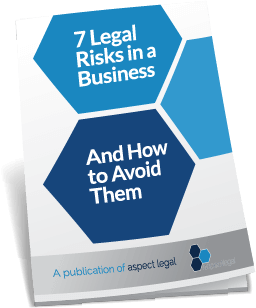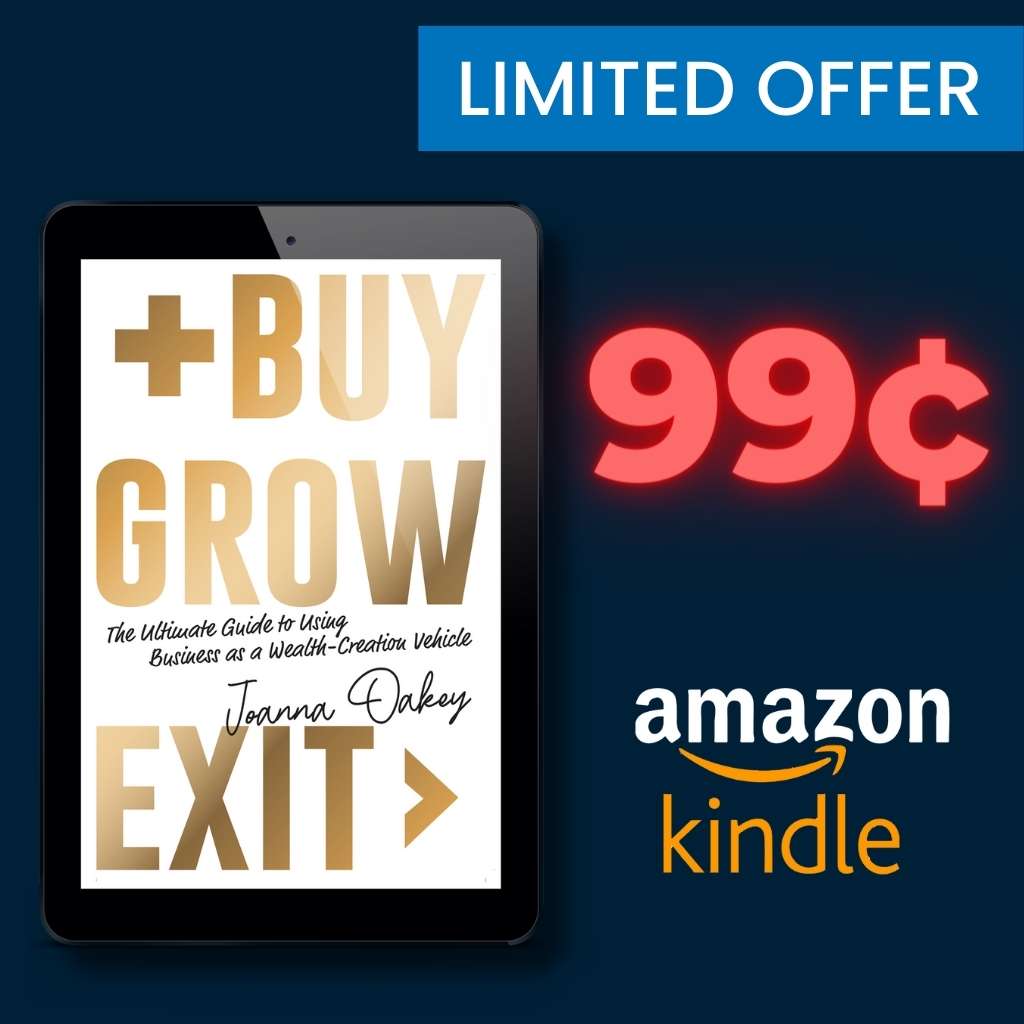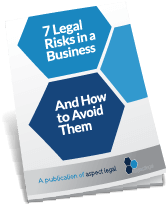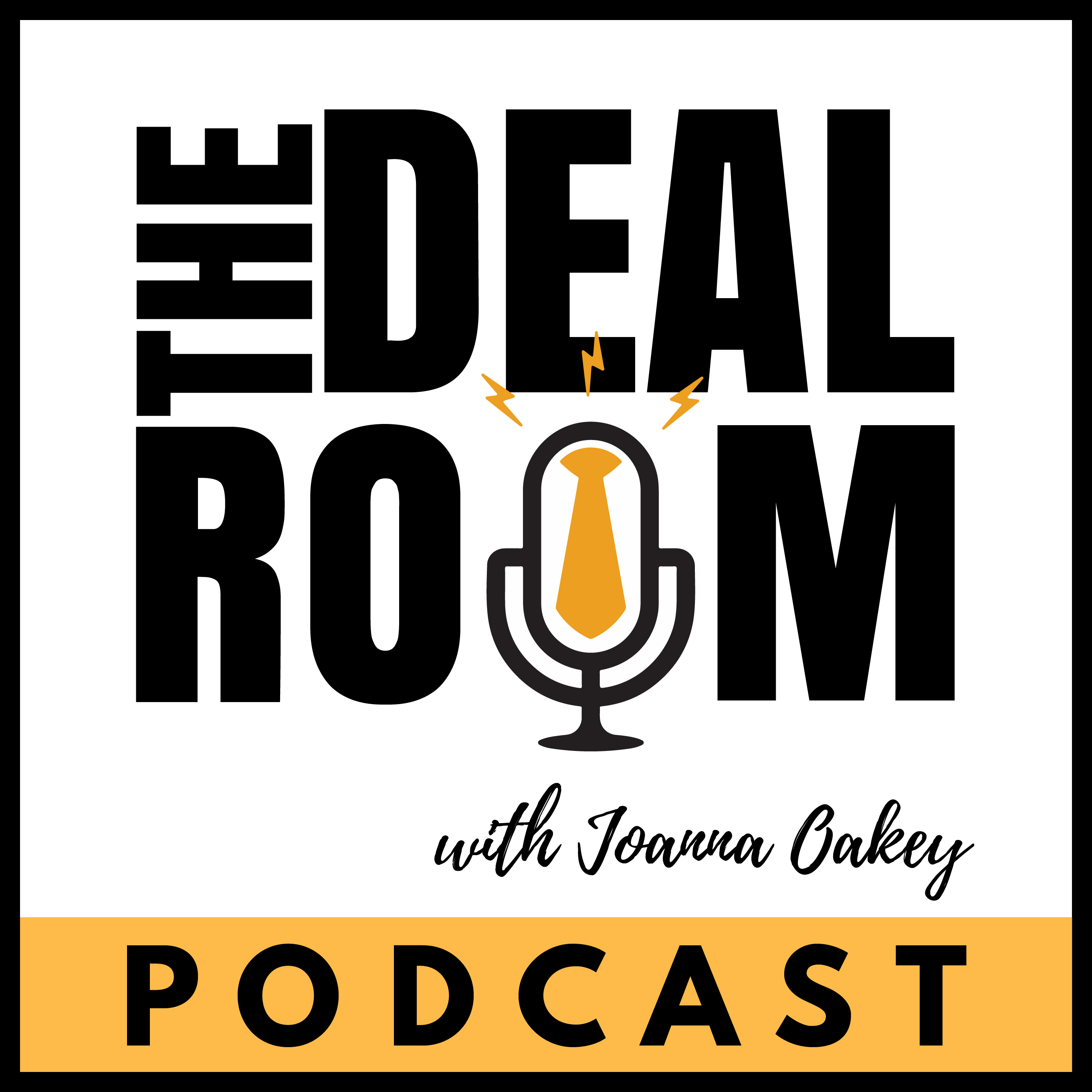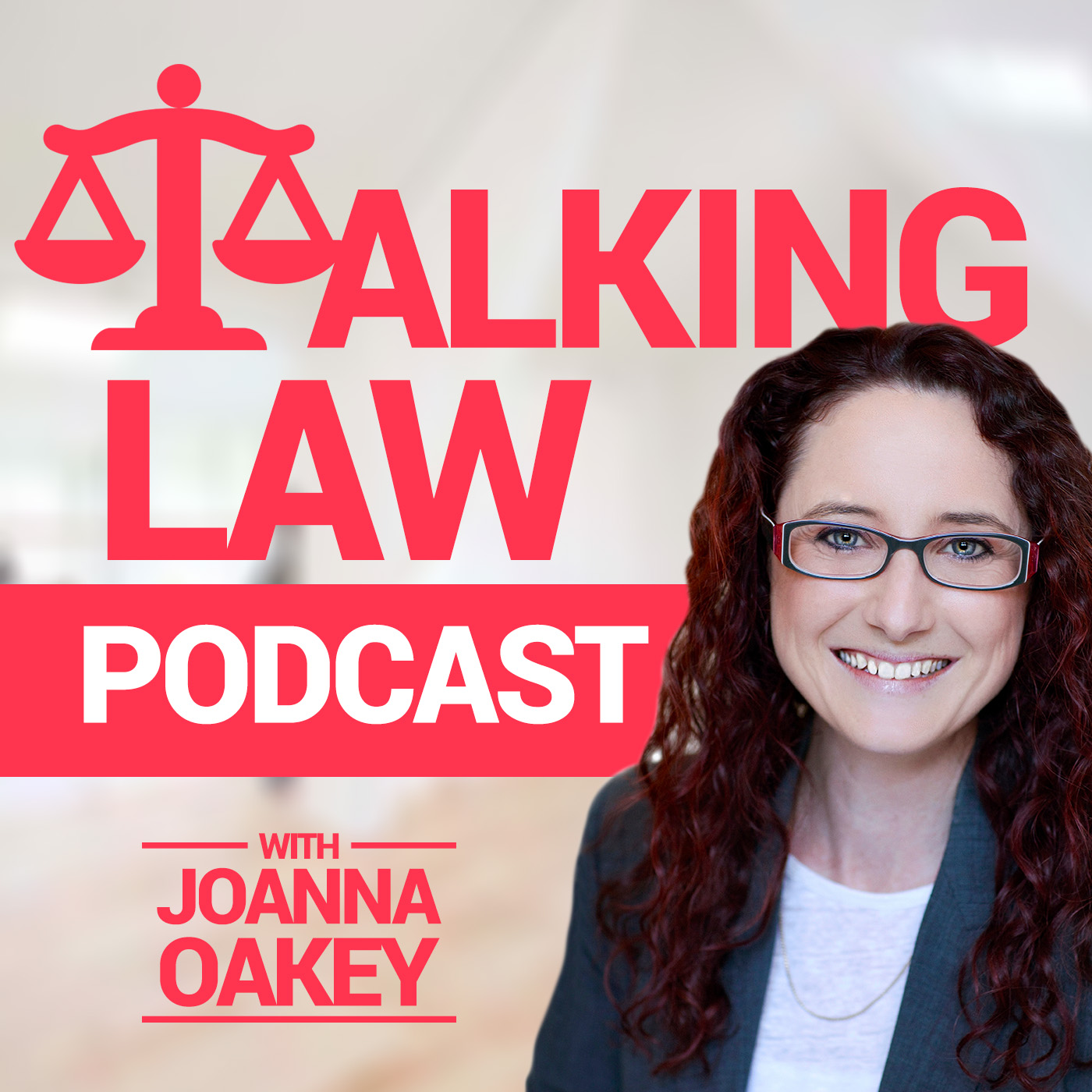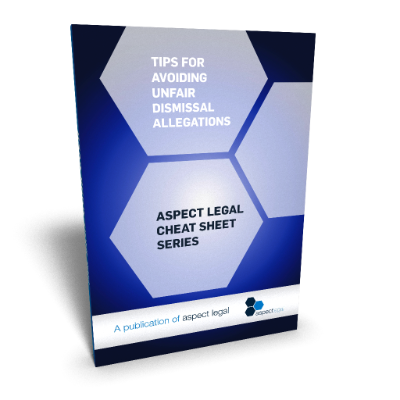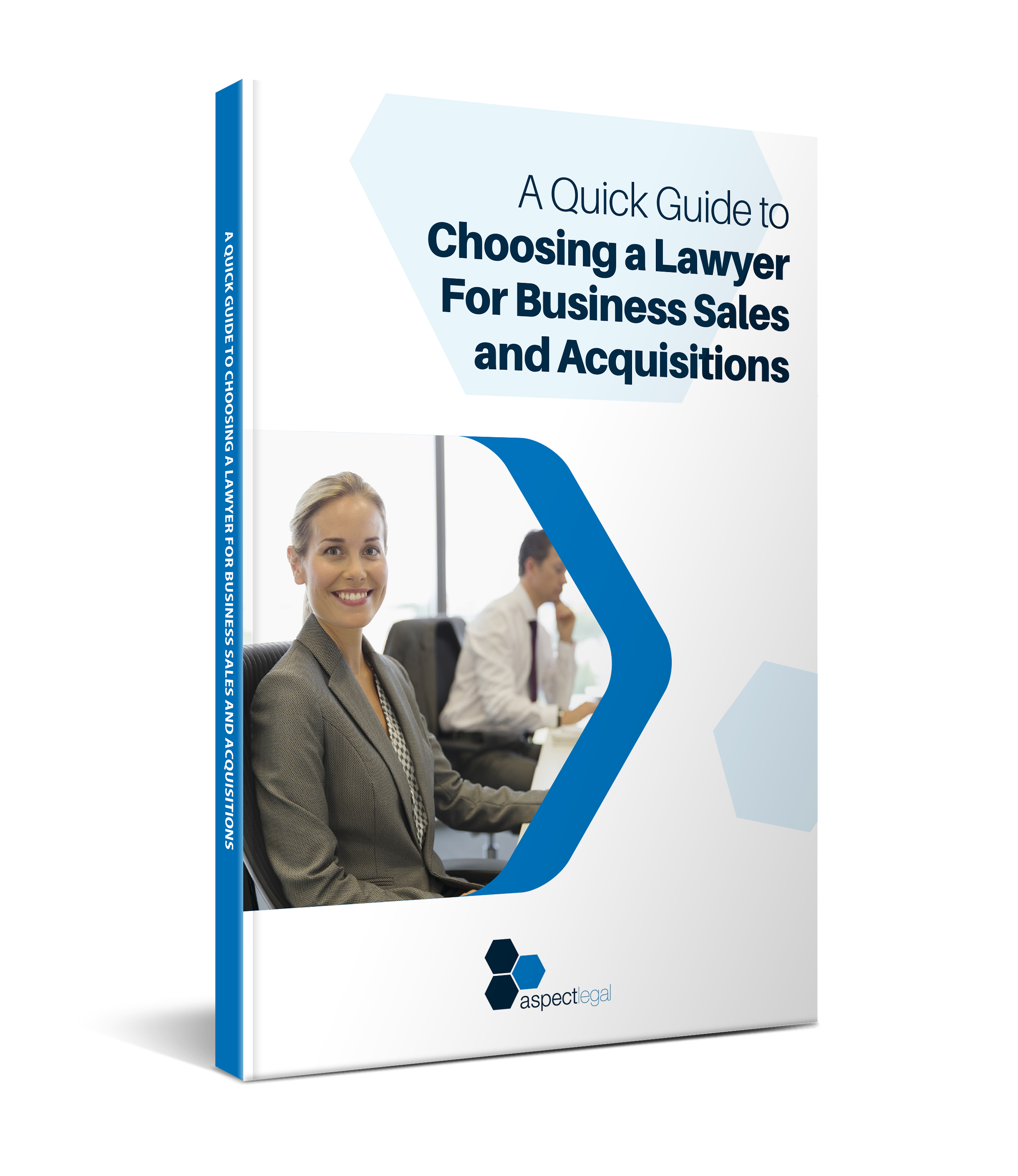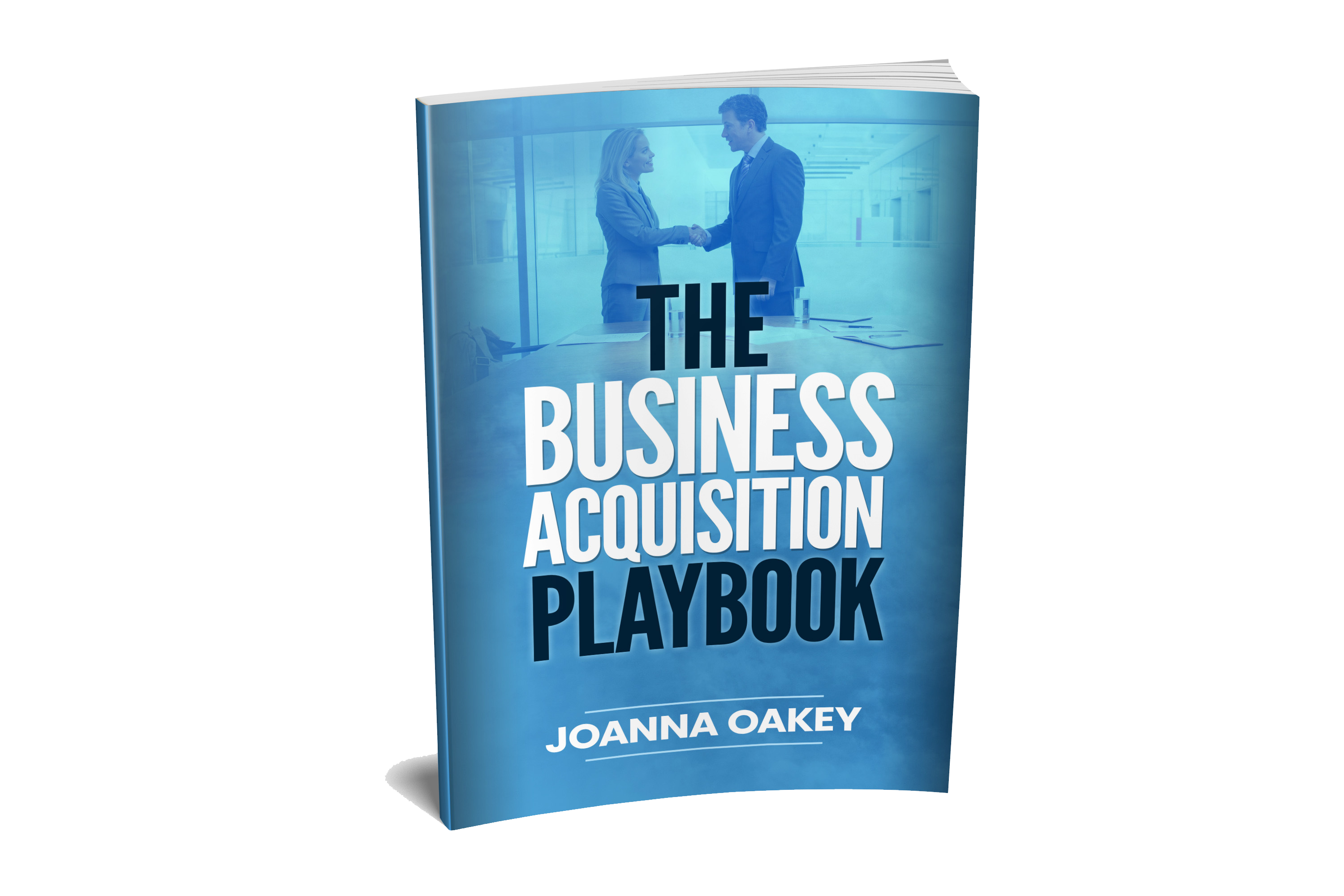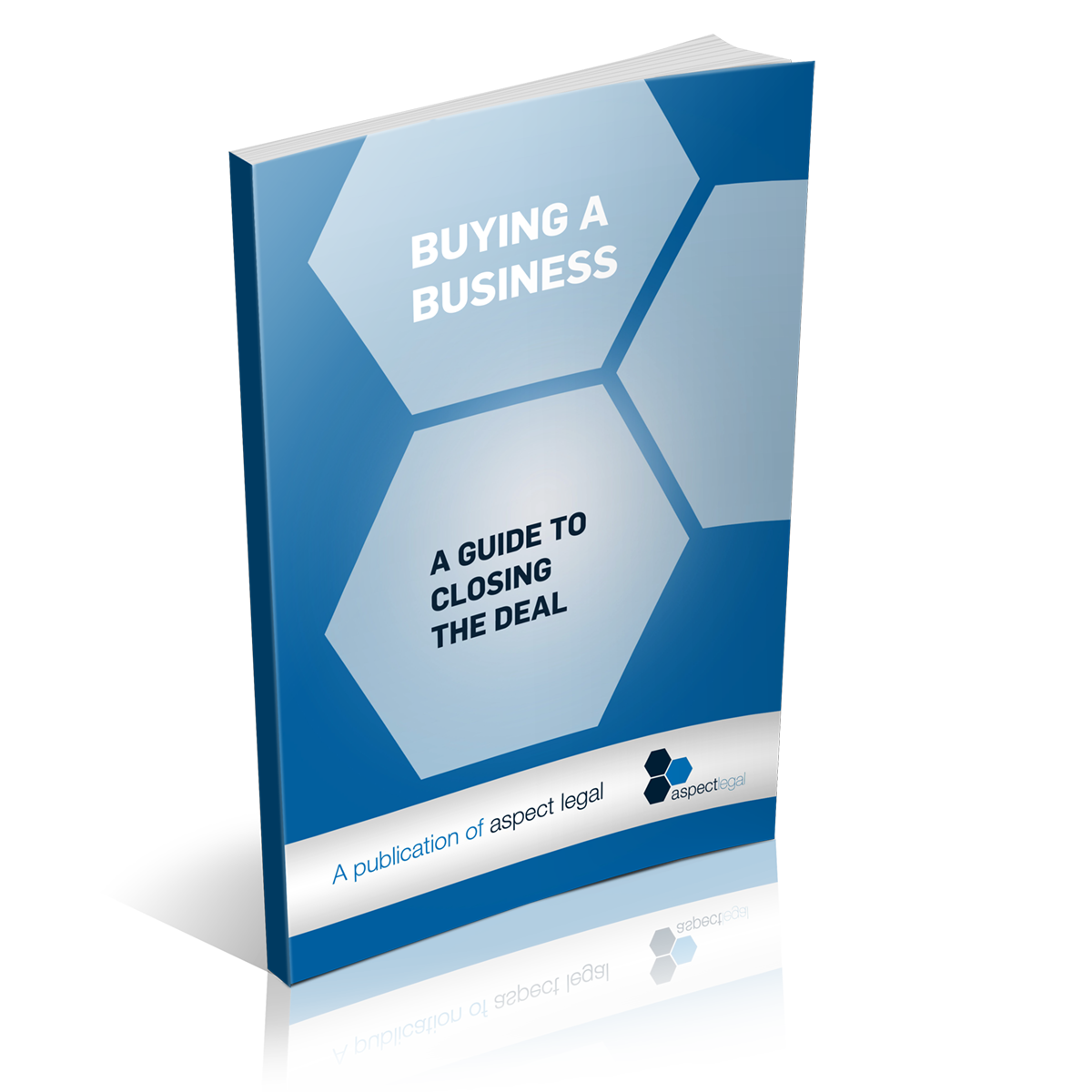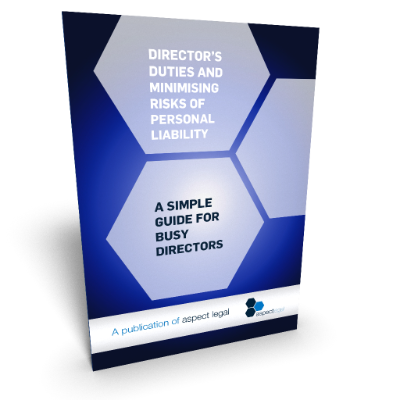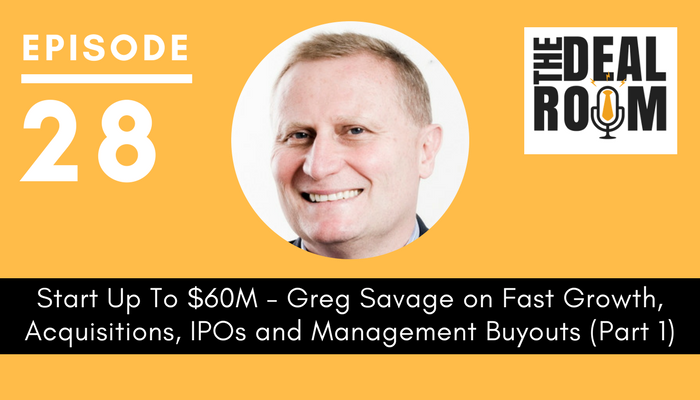
In this episode we have brought in Greg Savage of The Savage Truth for an exciting 2 part series. Greg is one of the most influential people in the Australian recruitment industry with a wealth of experience in understanding building businesses, as well as M&A activity. We open this series by taking a look at how Greg managed his first company from start up to being a $60m company, while surviving the great 1990 recession, and then getting publicly listed soon after recovery. We discuss how to optimise growth from acquisition. And we delve into his perspective on the tricky area of earn outs.

Episode Highlights:
- From Start Up to $60-Million
- Surviving the 1990 Australian Recession
- Leadership, People Management and Coaching
- From Recovery to Public Listing
- Listing is Not the End, It’s the Beginning
- Optimising Growth From Acquisitions
- Friction and Fracture in Earn Outs
Hi, it’s Joanna Oakey here and welcome back to The Deal Room Podcast, brought to you by Aspect Legal.
Today we’re in for a treat. For the next two weeks we have on the show Greg Savage of The Savage Truth who brings to us a wealth of experience in understanding building businesses as well as M&A activity.
Now usually I don’t go through our guests bios in a detailed way. But today I would actually like to give you a little bit of background of Greg before we head over to hear the interview between Greg and I, because I think it will really help to contextualise some of the things that Greg is talking about if we understand the background to his story.
He talks a little bit about it. But I’d say it would be useful if I give you an overall summary first so you understand what to expect when we talk with Greg.
Greg has founded a number of businesses, four in fact in the recruitment industry. He has got a massive bio that to be honest is thoroughly exhausting to read given the sheer number of achievements.
He started out with his rise at the age of 27, becoming a board member of what used to be the Haye Group and then he went on to establish his first company which he built up to eight offices, 200 staff and annual sales of 60 million dollars and then listed the company on the ASX.
Next he headed out to a role as the Asia-Pacific CEO of a large company. Ten years later he acquired a part of that business via a management buyout which he then sold off three years later after building it further.
So here already we have a number of interesting elements that I think you’ll find drawn out in the interview as we go through building of the business from start up to listing on the ASX, the concept of building a business and then buying part of a business as part of a management buy out which of course is an alternative exit strategy for many people who are selling and also an entry strategy also for the people who are buying as part of the management buyout.
Today Greg is the founder and significant shareholder of one of Australia’s fastest growing recruitment companies. He’s still on the ground today. He’s still an active investor today, both in that company and in a number of other recruitment and H.R. tech businesses in and outside of Australia as well as an advisor and director for 14 recruitment companies in Australia, New Zealand and Singapore.
Out of all of this you can see Greg has a lot of information that he can share with us in relation to growing businesses and not just growing businesses, but also using acquisition as a growth tool both the positives and negatives, and many other areas that are interesting in the M&A environment. So you can see why I was exhausted reading his bio and of course my first question for Greg was therefore obvious.
So let’s get to it.
Joanna: Look Greg, thank you so much for joining us today. Do you ever have time to sleep? By the sheer volume of your background bio, I don’t really see how you would fit that in.
Greg: By the way, Joanna thank you very much for having me on your podcast.
Joanna: My pleasure.
Greg: It’s very important to differentiate between PR and reality. I have plenty of time to sleep and do other things.
In fact, I would be honest with you and say that at this particular stage of my work life it is as good as it has ever been. I probably work very hard for 40 weeks of the year and I do other things with the rest of the time.
But as people who look at me and say “Wow, that’s lucky!” I say “Yeah, that’s luck built on 40 years of probably very very hard work.” Like everybody else, everybody works to achieve what they are aiming for.
From Start Up to $60-Million
Joanna: Yes. Well look I’d really like to start by a more serious question. First by running through a bit of your background and perhaps to start off by talking about the company that you founded, Recruitment Solutions. That is the first company that you founded. Is that right?
Greg: Yes, that is a while ago. So what happened there was that I was working for a company called Accountancy Personnel which this was a long time ago. That company was bought by Hayes which is now one of the largest recruitment companies in the world. At that time, Hayes was actually a logistics company. They transported things around and they were diversifying and they got into recruitment.
Interestingly enough, they did so well at recruitment that they sold all their other interests and all their other businesses over a period of 20 or 30 years and now they are in the Top 10 recruitment companies in the world.
Anyway, I was the junior of three guys who were running the business out here in Australia. They bought the business in the UK and the Australian subsidiary came along.
We said to the Hayes guys, who were very nice guys, people. “Look, we’ve been running a business here. It’s very profitable. We would like to keep doing that, but we’d like some equity in the local business” and they said “Certainly, not.”
We were very naive I guess. They were a publicly listed company. They weren’t giving equity to some upstarts in the antipodes.
They didn’t treat us that way at all by the way. But I’m making a joke about that.
It prompted us to start our own business. And when I say us, there was me and two others. I was actually even more junior of those three, both in the hierarchy of the company we had been at but also in years. I think I was only 28. But off we went into this great endeavor.
I put in 15,000 dollars. We all put in 15,000 dollars. This was in the 80s mind you. Fifteen thousand dollars to start the company. I had to borrow that from my dad. I didn’t have 15,000 dollars when I was 28. That’s probably having like 100,000 dollars now. And away we went on this journey.
I have to say it was a great journey. There was a lot of learnings and the business did exceptionally well after a period of time and after trading through some quite catastrophic recession in the 1990s.
Joanna: So you had two partners at the initial phase. Did you start it from the ground up or did you start by the acquisition of of another business?
Greg: No. We started ambitiously in that we started with nine people which was different to what most.
The recruitment industry is an industry made up of some very huge global players that you will be familiar with like Adecco and Randstad and others, Hayes and very few medium sized firms. The vast majority are small, under 10 people.
Eighty percent of recruitment companies globally have less than 10 people. So to start with nine was ambitious and we did. It was scary. I mean we paid ourselves a lot less than we had to pay our staff and all those sorts of things. But we didn’t acquire a business.
We did acquire was some very good skills of people and some relationships that they had and they all had relationships with us because we had worked together before and so we were able to get momentum very quickly which we needed because we needed cashflow obviously.
Joanna: And so then, the end of the story for this particular first business is that you ended up growing it to be a 60 million dollar company. That’s a massive achievement from ground up.
What are the key elements that you think drove the ability for it to grow so large from a startup?
Greg: Well I think some of them were purely fortuitous. One of them was the three people. Now you’re going to talk later on about acquisitions and often things go wrong because of issues between the management. The three people, we each had very different skills.
We hadn’t thought about that really very much but it turned out as we evolved. One of them was a chartered accountant and he was very strong – he had more than just that but he was very strong in the financial.
The other, Graham was exceptional with clients, exceptional with candidates, a massive ambassador for the business. He still recruits now 30 years later and is one of the most respected in Australia by far.
And I was good with people and good at managing and good at getting the process right. And so that was actually very important to help us grow. We weren’t treading on each other’s toes. We had a healthy respect for what each other did. So I think that was important.
Secondly, we treated our business, I think in retrospect, like it was a big business long before it was a big business.
So we had processes in place. We had a board. Our compliance was very strong. We had structures we put in place, training manuals.
This sounds obvious now in 2018. But in 1987, for a recruitment company, not you know. We invested a lot in branding and marketing which other people didn’t think was important. We invested in technology earlier than most. And I think we were quite brave. Maybe brave, maybe stupid but a bit of both, which allowed us to open offices in other cities. And I think we had a very strong ethos and culture.
I mean it was a tough place to work. People still tell me that now. They say “Wow, this is a tough place to work. But well, we learned a lot.”
In fact, I’m quite often stopped in the street by people. So somebody worked out that there are 67 recruitment companies in Australia and New Zealand who are now owned by people who used to work for me, which I’d like to take some credit for that. I’m probably due none of it.
But I am stopped by people in the street to say “Wow, when you used to make us do this and you introduce that, we thought it was tough. But guess what, I’m doing it now” they say to me and we realise now how important it was. So I think we were ahead of our time in that way. There was a big work ethic.
But the other big thing which is an interesting story, which might happen again, is that in 1990 and I don’t know how long you’ve been around Joanna. But in 1990, Australia had the recession that Mr. Keating told us we had to have and it was a catastrophic recession. It is much worse than anything I’ve seen since.
It's trite to say, but businesses survive and thrive because of the leadership. - Greg Savage #TheDealRoomPodcast Click To Tweet
Surviving the 1990 Australian Recession
Greg: To give you an idea, we were handling (I remember this because people used to fax me this every day every week). This was before the internet. They fax me how many job orders we were handling. In other words, how many permanent jobs you were recruiting. On average, in early 1990 it was about 200.
That number is only important when I tell you that by the end of 1990, it was 18.
Joanna: Wow.
Greg: So that’s how the demand for staff dropped and our business survived. Sixty percent of recruitment companies went under between 1990 and 1992, sixty percent. The industry was decimated.
We honestly survived for three reasons. Number one we had no debt. I am a big fan of minimal debt, or if you’ve got debt, it’s strategic. Never get yourself into a position that if your revenues dropped by 50 percent, suddenly the bank owns you. So that’s number one.
Number two we had a strong temporary and contract business. This is very important for any business because there will be people listening to us who are not in recruitment. It doesn’t matter. The lesson is you’ve got annuity revenue.
So if I got a hundred contractors out working today on assignments from one month to six months, that is an annuity revenue stream. A permanent placement where I charge you a fee Joanna for placing a paralegal in your firm that is a one off fee. You pay the fee and then you don’t recruit for a year. I’ve got no more revenue.
Joanna: So you’re talking about recurring income streams.
Greg: Exactly. That was the second thing. The third thing was and this was all due to the partner who had the finance knowledge.
I distinctly remember the meeting where I said, as the revenue started dropping and the news was bad and companies were closing. I said “Don’t worry guys. I will get the recruiters and we will sell ourselves out of this problem.”
My approach was going to be we just have to go knock on more doors, talk to more people. He said “Good. You do that. But in the meantime, we are cutting our cost” and we did. We cut our cost by more than 50 percent. We had five offices already where our business had only been going three years. We closed two of them. Our staff dropped from 70 to 35.
I remember the day we had to ask everyone in the company to take a 10 percent salary increase. The three of us took a 20 percent salary increase. All admin staff were let go. Pot plants that were hired were wheeled out the door.
See I would have cut costs 10 percent and then another 10 and I would have been chasing my tail. What we did on his prompting was we cut deep fast. As a result we traded at a break even for two years, which doesn’t sound much. But it was a break even, whereas 60 percent of our colleagues went bust.
I would never revel in the failures of anyone else or their misfortunes. But it is true to say that when the market picked up, most of our competitors were gone.
Business grew dramatically from 92 through to 2000. We listed in 1998. Some of it was because we had been through the terrible times with our clients. We were still there.
Last man standing? Not quite. There were lots of others. But that was the lesson that I learnt about trading through tough times.
And we kept all our good staff. And then of course those people who’d been burnished under fire so to speak, who traded through that tough talk when the market picked up, they were like kids in a lolly shop. They were better than their other competitors and they were grateful for the new world and they were highly successful and away we went.
Training is good, but coaching is better. - Greg Savage #TheDealRoomPodcast Click To Tweet
Leadership, People Management and Coaching
Joanna: Wow! That’s a great story. You’ve been very clear here about the three elements you feel really pulled you through. But was there a lot in that then that provided the backbone for you moving forward in all of your other ventures?
Quite often I talk to people and they feel that partly they’ve been made from their ability to work through challenges. I see business owners who sit there at the point of these challenges and I think it’s important for them to see the benefits that they can get out of the situation once they’ve ridden through it I guess.
Greg: Well it’s true. It’s trite to say, but businesses survive and thrive because of the leadership.
Leadership is something that can be learnt. You can get better at leadership. There are natural leaders. None of us are Nelson Mandela or whatever, but all people can get better at it.
I think what we learnt at that time and it was part of our DNA was you want to be successful in a people business. We don’t manufacture anything in my business. It’s about developing people skills.
Retention of staff isn’t about paying people more or putting in a billiards table. This is absolute nonsense.
People have to be fairly paid. They got to have the incentive and all that, but really what people are looking for is communication and clarity and fairness and learning. People want to develop.
I’ve interviewed a million people in my life for jobs. When you ask them, “Why are you looking to leave?”, the most common answer is “I feel as though I’ve stopped growing and learning.”
There is a lesson there for leadership, that is how you grow people.
The second part is creating a high performance culture in a business means introducing an ethos of accountability and that is lacking in so many businesses. In all our businesses, it’s about accountability.
I believe you can’t manage what you don’t measure. You need to do that and you need to make people accountable once you’ve given them the tools.
And then the final sort of leg of that is performance management and that means if somebody is not performing, there may be good reasons for that. They have not enough training. You haven’t taught them properly. They are going through a tough time out of work. It might be a thousand reasons that you’ll take into account. But at the end of the day, in a business like recruitment where 70 percent of your overhead is staff salary, 70 percent.
I see owners of recruitment companies agonizing over whether they spend 10 dollars extra on the advertising (and it is good to micromanage those costs, but that’s not where the upside is). The upside is in the people management and the productivity of the people. It’s long term, serial mediocrity of your people that will drag the business back.
On the flip side of that is your responsibility as a leader to introduce an ethos of coaching and I’m not talking about training. Training is good. But coaching is better, where people are taught on the job and there’s a constant ethos of improvement. And I have found that that gives you great profits. It also gives you great loyalty and longevity.
Let’s Take a Break
Let’s take a short break. When we get back, Greg talks about the process of getting his first company publicly listed, and why listing is not the end of things, rather it’s a beginning of sorts. We also talk about his experience as a buyer – and how to really drive an excellent strategic outcome if you want to grow your business through acquisitions. And finally, we close this episode with some rich discussion on the tricky area of earn outs.
And that’s next! This is Joanna Oakey, and you are listening to The Deal Room – a podcast brought to you by Aspect Legal.
Our Free e-Books
Aspect Legal has produced a number of great publications that provide some simple education in preparing businesses for sale, and in getting ready to buy. These are particularly relevant if you’re a business owner gearing up for sale, or if you are gearing up for an acquisition.
But if you’re a business advisor and have clients considering a business sale or purchase, then e-books like these are also a great way for you to pass on information that is highly useful and relevant to them.
We at Aspect Legal believe that preparation is key. It’s true in life, and even more so with the M&A space. Being prepared will reduce your stress levels, reduce your costs and even make the process enjoyable – as it should be!
So be prepared and get the best deal possible!
We have 2 ebooks available :
To get a free copy of either of these e-books, simply head over to our website at thedrealroompodcast.com and or check out the show notes to this episode, and find the download link for these free publications.
We also offer the option of co-branding if you’d like to customise these documents for your clients by having your brand attached to it. Just get in touch with us via our contact section on our website at AspectLegal.com.au.
Welcome Back
Welcome back! Earlier, we drew some great insights from Greg’s rich history in building his first business from being a start up to a 60-million dollar company while surviving the horrific 1990 Australian Recession. Greg also drilled into the valuable role of leadership, people management and coaching in growing a business.
This time, we’ll continue the conversation and talk about Greg’s experience first in getting his business listed after surviving a recession, and second as a buyer, in a third party sale.
From Recovery to Public Listing
Joanna: How long was it then until you listed that company? How long did it take to recover and then for you to look at an exit through listing?
Greg: I think the market started improving in ‘92 and ‘93. We were grateful for that. We took a big breath. Revenue started to climb and we really emphasised the contract and temporary business which increases the value of the business and the cash flow.
But actually it has a negative impact on the cash flow in the short term because you pay your contractors before your clients pay you. But that’s a small problem if you are funding it through a lot of permanent placements. It gives you a lot of muscle financially. We opened offices in Melbourne and Brisbane and Adelaide and Perth and New Zealand.
And I think it would have been about 97 that we had a little bit of an away day in the Hunter Valley with the three owners and we had a facilitator, which I highly recommend by the way. Because you might know people very very well, but that might be the exact barrier to honestly sharing where you’re up to because you’ve been working so hard to build this business. Who is the first one who is going to say “You know what, I feel like getting out.” That’s not easy conversation, right?
So the facilitator turned out that even one of the parties was I think 12 years older than me. So his time frames and goals were maybe a little different. Anyway, the decision to consider an exit was mooted and we’d had approaches because we have pretty high profile in a way and we’re profitable, very profitable.
But on a trade side at that time, you may have got a three to five times multiple on EBIDs and we listed at a 10 times multiple and the share price doubled in a year. We’d make 20 times. Well profit went up too. But you know maybe there’s a 15 times multiple. You are never going to get that in a trade sale.
However there’s a lot to be talked about in terms of listing and I’ve got a lot of clear thoughts on what that is like for a small business and we were a small business. I think at that point we turned over 40 million maybe, making four. So quite profitable.
I think in retrospect that we were too small to list, because while we did have institutional interest, they are looking for rapid growth. And to be frank, we listed with a clear vision to make acquisitions and to take that 40 million dollars to a 250 million dollar business. And I don’t think we did that. Well I know we didn’t do that.
But I don’t think we were good at making acquisitions and I can tell you why in a moment. But we did make some. And we grew organically and the business grew to 60 million and the share price doubled. So a lot of people made a lot of money and a lot of people were happy. But still, that is very small to be on the radar of institutional investors.
Joanna: Yeah.
Greg: And it’s very expensive to be listed Joanna. It will cost you a million dollars a year. There’s a lot of compliance. It’s also good because if you go and see a company and you’re a listed company, they take you a lot more seriously. You get lot more credibility. So there’s that.
I was probably in my late 30s and it was a great experience for me. I was young. I was naive. I grew up a lot but I didn’t really enjoy having to justify to institutional shareholders why our margin had gone down one percent in December. I didn’t like it.
Previously, we had made decisions over a few beers. Hey let’s open an office in Adelaide. I know this guy. And the decision was made. Well, you can’t do that, as quite rightly you can’t do that.
The business week we sold out most of our shares, but not all of them. I think the business was 60 percent owned by the public and therefore the majority of the board were professional directors. Only two have us on the board who were insiders so to speak. And so I think we spent a lot of time there while those people brought excellent expertise and asked questions and tested us and all the rest of it. I found that hard.
It is hard to go as an owner of a business to being the manager of a business you no longer technically own. I think that’s a psychological, emotional challenge. And while there were many many benefits financial certainly, credibility, experience, networks, staff made money, good for attracting people, being taken seriously. All those were good.
I’ve got a lot of clients who say “What about listing?” and I say “Don’t even consider it.”
If you’re a 150 million-dollar business and you’ve got a clear path to half a million, half a billion then okay. But there’s not many of those in the recruitment industry.
Joanna: And how long did it take you from this light bulb moment where you were all on the retreat thinking what you would do and then came up with this idea of listing, to the listing itself?
Greg: To be honest, this was a long time ago. But I think the retreat was probably part of a series of conversations I remembered particularly well because the facilitator was so good at getting everybody to be (not honest, everyone was honest) but to reveal their cards so to speak.
And I think it was then probably six months and then a broker or an institution, I don’t know what you call them anymore, but the company that took us, manage the float and that probably took a year.
You’ve got a lot of work to do preparing. You’ve got to make sure your compliance is right. You know you’re going to go through a due diligence. You know you’re going to have people looking under the sheets. There wasn’t anything price to hide but you got to get it right and you’ve also got a massive amount of preparation around prospectuses and audits and all the rest of it.
It took about a year. So I think 18 months from “Hey, let’s think about exiting.” to “What are the options?” to the listing itself.
When you list your company, that's not the end of the story. That's the beginning of the story. - Greg Savage #TheDealRoomPodcast Click To Tweet
Listing is Not the End, It’s the Beginning
Joanna: But you then stayed on after the listing. So it wasn’t an exit from the perspective of you personally exiting the business at that point.
Greg: No. Nor was that my intention. And I was to add another two or three years.
I’d say this to anyone thinking of listing, because this word exit makes you think you’re exiting. When you list your company, that’s not the end of the story. That’s the beginning of the story.
Joanna: Yes, that’s right.
Greg: Because it’s at that point that you’ve taken people’s money and they have given you money to see the share price go up.They have paid money for a share in your business for you to grow that business.
So you are now not only beholden to shareholders and other stakeholders. You have a responsibility. They will stop you in the street and say “What are you doing about my share price?” I mean no joke.
It’s usually a pretty short conversation but you know that’s just a dramatic example of what your responsibility is.
It’s usually a five year plan and then you can sell. In fact, and I’m sure we had this, normally your shares are escrowed. You can’t sell the shares that you’ve kept because they don’t want people selling and going because you are the people who got the business there and you are the ones at that point best equipped to take it where it’s got to go.
Optimising Growth From Acquisitions
Joanna: Yeah. And so you said part of the plan was list, get capital on board, then make acquisitions, fast growth. So what went wrong with the plan? You mentioned before that you felt you weren’t good at making or the organisation hadn’t achieved the optimal success from acquisitions. Why? What happened?
Greg: Well it’s all with hindsight. If the other guys were in the room now they might have a different perspective. We took it from 40 to 60 million and the share price doubled. We made some small acquisitions and I think they were positive.
But to be perfectly honest, we wouldn’t pay enough for the good assets. It’s a typical thing. We thought our business was. My experience of people selling is that I don’t think I’ve ever had an experience where someone who’s looking to sell a business doesn’t think it’s worth more than it actually is.
It’s a bit like people selling their house. They all think it’s worth more and at the end of the day, it’s worth what somebody would pay.
Joanna: Yes.
Greg: On the other hand, we were like wanting people to sell their business to us for what we thought was a fair price that we probably wouldn’t pay that little premium to get the best deal.
It’s also quite hard when you’re a 40 million dollar company or 50 million, even if you’ve listed, there is a limit to the size of acquisition you can make and you don’t want to make a lot of small piddling acquisitions because they can be very time consuming and add very little, in fact they can detract. I’ll talk about that later.
So we were accounting recruiter mostly and we diversified. It would have been great if we could I think one of the areas we diversified into was marketing.
If we could find another big marketing recruiter in all our locations who turned over 20 million, if we could have added that and taken our 40 and their 20 which would have been 60 and then magically turned it into 100 through cross-selling. That’s the smart thing.
We were able to do that. Having said that, it’s not as if there are thousand candidates for that. It’s still very small. So we needed to do something of substance, of scale and that’s extremely hard to do. And we didn’t do it in the three years I was there afterwards. I offer that as a very harsh criticism of ourselves.
We did make acquisitions. We did open more offices. We did grow by 50 percent I think from 40 to 60.
Joanna: But it’s good insights. You’re sort of reflecting now on how if people are adopting a similar strategy, they might be able to pull even more value out of the process of acquisition as a growth strategy. I guess that’s really what you’re saying.
Greg: Yeah. I’m saying you’ve got to look for an acquisition where one and one equals three. If one and one equals one and a half, you pretty much suck.
It’s not so good because acquisitions are littered with risk. They are very time consuming. They can have long term influence on brand issues, on staff retention, on data. There’s a lot of things that can go wrong and I’m sure we’ll talk about that later.
However, if they go right they can be a very very beautiful thing and I have been involved in some that have gone extremely well and if we could have found something which was of substance. See what you want to do is don’t just want to add revenue. You want to bring with this thing maybe entry onto a new market.
So in my example of maybe we could find a marketing recruiter, if we could have done that and then added to them our great training and our great technology and our brand, that’s when one and one equals three and that is how you make a lot of money out of an acquisition particularly if you are public.
Because you may have bought that business out of five times multiple and in the day you bought, it comes into your business is trading at 15 times multiple. You’ve actually made a lot of money that day let alone any other day.
Joanna: And maybe you know given you’ve brought it up. Let us talk now about some of these great success stories you’ve seen with using acquisitions as a growth strategy. What have you seen work well?
Greg: I was involved in one just the other. It feels like the other day but it’s actually three years ago. I’m a founder of a company called People to People, which is an accounting recruitment business. Well it was. Now it has diversified.
That is a success story where three people used to work for me in Recruitment Solutions, the company we spoke at length about. I helped them with money and I think the best way I helped them was give them the confidence that they would succeed. I have been on the board as director for all those years, which is now 12.
We made an acquisition. We wanted to get into Melbourne and the way we did that was to acquire a small business. But the key factor there was that the leader of that business wasn’t selling to get out. She was selling to join us. She wanted to take her little business, which was good, and use our resources to grow something.
She had this dream of running the best recruitment company in Melbourne and and frankly in three years she may well have achieved that already. I mean that business has grown from three people to over 20 from virtually no revenue to eight million dollars and it’s only the third year. EBID margins are normally seven and a half percent (something around there) so it’s a profitable business.
That was the perfect marriage of her drive, her local contacts, my involvement with her as a mentor probably played a part and then People to People’s brand and technology and resources and training and cross-selling all the Sydney clients into Melbourne.
So in that case exactly what I had sort of dreamt would work has worked. If this webinar was 18 hours long, I would share with you all the other ones which haven’t.
That is where everyone’s interests are aligned right? And she retained a shareholding in the local business. We had it as a separate business. People to People will acquire my shares because I took a share in funding that business and what People to People have ended up with is a significant business, their brand and they’ll own it all in a year or two and that’s a beautiful thing.
That’s a very small example but that is where it went well. It took a lot of trust, a lot of compromise, a lot of people learning how to work together and a lot of belief in the future. A lot of effort from a lot of people and it will make several people quite a lot of money which is a good thing.
I mean money in itself is not the thing. But it also creates a lot of jobs and it makes People to People a much stronger business now. The business is churning over 120 million dollars and Melbourne’s becoming every day more a significant part of that.
Friction and Fracture in Earn Outs
Joanna: And it sounds like an important element of that was the the person who was the seller wanting to stay on and be involved, and of course their skills in and of themselves in order to make the most of being acquired by a larger organisation.
Have you seen examples that work really well where you’re also dealing with sellers that are ready to clear out?
Greg: Yeah. In that particular case, yes. I mean I wanted that deal to go ahead because I believe that the person was the right person and in many ways like hiring.
But to answer your question, look earn outs are problematic because by definition almost always on the surface people think that in earn outs everyone’s interests are aligned. They are not aligned for the most part. As a result they cause conflict and tension.
A typical earn out might be (that I’m aware of) and bear in mind I’m not an expert in mergers and acquisitions.
I run recruitment companies. But I have been involved in a lot of buying and selling in recruitment companies and my experience is that earn outs, while you need them, you cannot pay (if you’re buying a business) you can’t pay the full price upfront. It has got to be looked at this way by anyone thinking about doing that.
First of all, you think our interests are aligned because I’m going to pay you, Joanna, 50 percent of the price on today’s multiple of three times. Then in a year, I’m going to pay you 25 percent on four times. A year after that, 25 percent on four and a half times.
It might be a good deal. You’d say everyone’s interests are aligned because we all want to grow the profit because the buyer wants to end up with a more profitable business and the seller wants to get a higher price for the second 50 percent of their business. Everyone is aligned. Well, it’s not true.
The seller has a very short time frame. The seller is making decisions (if they’re still in charge) that may harm the business in the long term but increase the profit in the short term.
I’m fond of saying to people who say look we can make more profit by cutting staff and doing this. You can’t shrink to greatness mate. You have to grow to greatness. But if you’re looking to increase the profit in the short term, sure. Let’s let more people go. Let’s cut our advertising. Let’s cut our marketing. Let’s not send people on that training course and our profit will go up this year, which will improve my payout. But in three years time, it will hurt us.
So you’ve got that inter-woven conflict of interest that often exposes itself not to mention the dynamic of personality and cultural misalignment. And many other types of misalignment for that matter which can make things go wrong. I’m not being negative but I am saying to you this. Of all the acquisitions I’ve been involved in, not even to mention the many I’ve looked at from the outside, the majority do not go the way people expect it and and there is disappointment on all sides.
Joanna: Yeah. I think earn outs are one of these areas in the M&A environment that always trigger heated discussions.
Because I think sellers are generally quite concerned about earn outs but they can be bought by the upside discussion. Quite often buyers for obvious reasons like them quite often. But we see a lot of risk.
We’ve actually got a number of podcasts which were linked into in these show notes where we run through some of the legal elements of earn outs so I’m glad you mentioned it.
It’s something that seems to come up quite a bit. But I think that’s because it’s it’s one of those tricky sticky areas.
Greg: I think the way to alleviate earn out friction and sometimes fracture is I think you’ve got to understand that you are entering into a marriage of sorts even if it’s for two or three years. You’re going to have to work with that person and I am fond of saying don’t buy someone’s business if you cannot stand being in the same room as them because you’re going to be in the same room as them.
This summer we bought some businesses that are small where we’ve actually engineered just a six month earn out. I’ve tried to alleviate the earn out thing by in some cases I’m paying the vendor for the results for the 12 months after they’ve left.
That’s a bloody clever idea actually because it means they leave it ship shape and they make sure that all the relationships are passed over to the staff who are behind because we’ve said 25 percent of your price is going to come in the year after you’ve left. So you’ve got nothing to do. You can’t do any billing or have an impact but you leave it in good shape. And so there’s those sorts of things.
Joanna: But then of course the seller then is always concerned. Well now hold on I’ve handed over controls to someone else so I don’t know they might run it into the ground. So really I have to approach this assuming I never get it.
Greg: Well, that’s true. If you’ve got a three year earn out and the first two the person was working there and then the third, it mitigates the risk substantially. And in many cases they don’t have to work there and they’re still getting money so there is an upside.
The other thing is in the pre-discussions and the negotiations is transparency and honesty about what is really going to happen around the sorts of issues that normally cause friction.
And they are brand – what’s going to happen with my brand? I’ve sold my company to you but my brand is important to me and my clients don’t want the brand to change on day one. So there’s so many cases of people saying yeah don’t worry about the brand and on day two they’ve changed it. So that can cause real friction.
Issues around performance measures and how staff are awarded.
Issues around what the vendor’s actual role is going to be. How much autonomy are they going to have or not?
All that is best. Those tough conversations what a lot of people do is they sweep them under the carpet and say once the deal is done, we’ll deal with it then. That’s not a great idea.
It’s better to have any difficult conversations and negotiation about that before so that when we get into it, everyone is not distracted by fighting about these issues. And they do end up fighting about them.
That’s a Wrap!
Joanna: That’s it for the first half hour of our two part series with Greg Savage of The Savage Truth.
As a quick recap, in this episode, we opened the series by taking a look at how Greg grew his first company from being a start-up business to being a 60-million dollar company while surviving the horrific 1990 Australian recession.
We also drew some wonderful insights from an analysis of Greg’s experience in two different ways to exit – one being through an IPO and another through a third party sale. He talked about his experience as a buyer and the way to really drive an excellent strategic outcome. And finally, we closed part one of this two-part series with a rich discussion on earn outs – how to alleviate the friction and sometimes fracture that often come with it.
If you would like to hear more about some of the legal considerations with earn outs, head over to episode 12, with Liz Lee who heads up our M&A division at Aspect Legal talks about legal tips and traps in earn out arrangements.
Next week, look out for part two – which is the final half hour of this exciting two-part series with Greg – where we then talk about Greg’s experience in engineering a management buy out. We also talk about some key concepts he has learned in the M&A space. And finally, we wrap things up by identifying the things that you ought to consider when getting ready for exit.
There’s just so much to learn from Greg. So please stay tuned for the second half of this series next Tuesday! And if you haven’t already subscribed, then just hit the subscribe button on your iPhones or your favorite player, and make sure you get the weekly tips from us here at The Deal Room Podcast delivered straight to your phone.
But in the meantime, if you would like more information on this topic, head over to our website at thedealroompodcast.com where you will be able to download a transcript of this podcast episode, if you would like to read it in more detail, as well as accessing some of those free e-books we mentioned about earlier.
Also, there you’ll be able to find details of how to contact Greg Savage, and you will also find details of how to contact our lawyers at Aspect Legal if you, or your clients, would like to discuss any legal aspects of sales or acquisitions. We’ve got a booking calendar and you can book in one of our lawyers to speak to for free.
We have a number of great services that help businesses both prepare for a sale or acquisition – to help them prepare in advance, and to get transaction ready. And to help guide businesses through the sale and acquisitions process.
We work with clients both big and small, and have different types of services depending on size and complexity – so as I said don’t hesitate to book a free sale or acquisition consultation if you want to find out how we might best be able to assist.
Thanks again for listening in! I’m Joanna Oakey and you’ve been listening to The Deal Room Podcast brought to you by the commercial legal firm Aspect Legal. See you next time!
Disclaimer: The material contained on this website is provided for general information purposes only and does not constitute legal advice. You should not depend upon any information appearing on this website without seeking legal advice. We do not guarantee that the contents of this website will be accurate, complete or up-to-date. Liability limited by a scheme approved under Professional Standards Legislation
